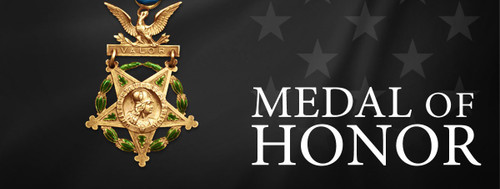Welcome to the Pro Armory Medal of Honor Series! In this article, we are going to talk about one very pivotal individual from a conflict that shook a newborn nation, John Gregory Bishop Adams. John Gregory Bishop Adams was born in Groveland of Essex County, Massachusetts, on October 6, 1841. For those of you who do not recognize this American hero’s name, allow me to tell you why you should never forget it. You see, John Adams served our nation in a time where the line of what is right and wrong was a little blurred. A time when the slave industry was still a large part of the New World’s production process. This was the time where brother fought brother, father fought son, and families would forever be divided between industrial tradition, and progression of human virtue.
Enlisting at the onset of the Civil War as a Private of the 19th Massachusetts Infantry Regiment, John was a mere 20 years old. He would go on to see some of the most horrific battles in the conflict, to include the gruesome battle of Antietam where his citations of bravery and valor in battle would land him a 2nd Lieutenant’s commission after just one year in service. A natural born leader, John Gregory Bishop Adams would field most of the historical engagements of the War, but the battle that he is most known for took place in one of the more bleak upsets for the Union Army.
On November 15, 1862, Major General Ambrose Burnside (the very reason sideburns are named as such) attempted to fool the Confederate Army of Northern VA. Under the command of General Robert E. Lee, he made a swift maneuver fainting a movement towards Culpepper courthouse and marching down to Fredericksburg, VA, instead. There, Burnside would cross the Rappahannock River and march on the CSA capital, Richmond, VA. The plan wholly depended on confusion of the enemy, an element of surprise, and the timely arrival of the pontoon bridges that were located in Berlin, MD. The move would allow the Union Army to swiftly capture the CSA capital, thus ending the war.
What sounded like a great plan for the new commander of the Union Forces, would ultimately end in disaster. When the Union Army arrived at Fredericksburg, the pontoon bridges were nowhere to be found. Storms and foul waters held their arrival back to the point that the coy Gray Fox ( Robert E. Lee) figured out Burnside's new plan. As a result, Lee’s Army moved his army from Culpeper VA., and into position across the Rappahannock River in Fredericksburg itself, thus cutting off the Union Army’s advance. The date was December 11, 1862 in and around the town of Fredericksburg, Virginia. Approximately 200,000 combatants, roughly 78,000 Confederates and about 130,000 Union soldiers, now faced one another across the span the Rappahannock River. The result of this battle would be one of the most one sided encounters of the entire Civil War. Totaling around 18,000 casualties, more than two thirds of which were from the Union Army, this battle marked a new low for the Northern forces in this conflict.
Now you may be asking yourself by this point in the story, “Where is John in all of this?” Just be patient! I am getting there… Out of this hellish fight came 5 total individuals whose' sacrifices and bravery would go on to be awarded the Congressional Medal of Honor. John Gregory Bishop Adams was one of these men. Amidst the fighting and endless rank upon rank of individual brigades sent against the well dug in CSA forces, was 2nd LT John Adams, who took it upon himself to not allow the Union advance to falter. When the Corporal and Lieutenant carrying the regimental colors were both fatally wounded, John grabbed the colors, one in each hand, and advanced forward. Without regard for his own life, and recognizing that if the colors fell the attack would disintegrate and turn into a massacre, John pushed forward to a point that the entire Regiment was able to reform on his position.
By this point, you may be wondering to yourself what I mean by the Regimental colors. You see, as armies became trained and adopted set formations for attack and defense, each regiment's ability to keep its formation was critical to its success. In the chaos of battle, not least due to the amount of dust, smoke, and arduous fighting on a battlefield, soldiers needed to be able to determine where their regiment was. Thus, these colors were equivalent to modern day radios and as such, signaled to the troops under that banner whether they were still advancing or if they were to be falling back. Therefore, if it were not for John Gregory Bishop Adams that day, his regiment could have been utterly destroyed and many more of his brothers killed.
I hope you have enjoyed this brief view into one of our Nation’s heroes. We should never forget those whose shoulders we stand on. The moment that we forget the road we have traveled and the sacrifices paid to get to where we are today, is the moment we fall into historical repetition and the eternity long 200 year “best by” date that plagues all great civilizations.
In closing, I hope that you stay strapped, stay trained, and keep your heads on a swivel! I will see you all in the next article about our American Heroes. Thank you for your continued support and loyalty to all of us here at the Armory as we remember those who came before us. I will see you next time everyone - stay safe!

Handgun Fundamentals Online Training
$97.00
at Pro Armory
Prices accurate at time of writing





 Gabriel Eck
Gabriel Eck




















